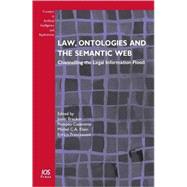Law, Ontologies and the Semantic Web
, by Breuker, Joost; Casanovas, Pompeu; Klein, Michel C. A.; Francesconi, Enrico- ISBN: 9781586039424 | 1586039423
- Cover: Hardcover
- Copyright: 1/15/2009
This book about legal ontologies and Semantic Web applications has its roots in workshops and conferences on Artificial Intelligence (AI) and Law. The domain of law belongs to the early adopters of ontologies and semantic web technology to support its enormous and fast growing demand for effective information management; it is probably only surpassed in this respect by the bio-sciences. Having easy access to relevant legal information among the rising flood of legal documentation is not only the concern of legal practitioners. The life and work of citizens becomes more and more entangled with legal issues as well. This volume reflects the wisdom abstracted from experiences accumulated over more than a decade of research and development in this area. It contains a representative overview of the state-of-the-art, covering both theoretical aspects and practical systems. The latter has been an important driver of research in this area, which can be observed from the geographical origins: the work discussed is mainly European, due to R&D initiatives of the European Commission in the various Framework programs. The Semantic Web is not only an area of research, but also a world wide project where easy-to-construct applications can directly find their communities of users. However, the semantics that are the engines for these applications are still the bottleneck in the development. Therefore one finds a large range of technologies and tricks to populate ontologies with machine understandable meaning of terms in this volume. This varies from the use of top-ontologies via design patterns to extraction of terms from text and alignment of existing terminologies. In fact, one may see this book not so much as the report of results of research, but rather as a specification of the elements of an emerging methodology for developing legal ontologies.







